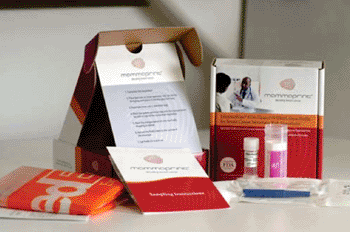Molecular Subtyping Of Breast Cancer Shows Potential
By LabMedica International staff writers
Posted on 31 Jul 2013
Molecular subtyping of early-stage breast cancer has identified a group of patients who do not benefit from neoadjuvant chemotherapy.Posted on 31 Jul 2013
For breast cancer, a variety of gene-expression profiling methods have been pursued, however currently there is no agreement on which molecular profile is best for discriminating between breast cancer subtypes to show differences in clinical outcomes, including time-dependent endpoints.

Image: MammaPrint Breast Cancer Assay (Photo courtesy of Agendia).
Scientists at the Sylvester Comprehensive Cancer Center (Miami, FL, USA) performed a retrospective analysis on samples from 437 patients enrolled in four independent neoadjuvant chemotherapy clinical trials. The molecular stratification of patients was made using with BluePrint and MammaPrint assays and correlated with the response to neoadjuvant chemotherapy and long-term outcomes in patients with early-stage breast cancer (ESBC) or locally advanced breast cancer (LABC). The results were compared with those obtained by classification using immunohistochemistry/fluorescence in situ hybridization (IHC/FISH) for the estrogen receptor (ER), the progesterone receptor (PR), and the human epidermal growth factor receptor-2 (HER2).
The investigators found a group of 90 women who showed little if any benefit from chemotherapy and who had good outcomes five years after surgery. That group could not be identified using the methods of traditional clinical pathology. This group represented a molecular subtype, Luminal A, identified by the BluePrint and MammaPrint assays (Agendia; Amsterdam, The Netherlands), which help physicians identify genetic pathways and guide treatment of breast cancer. They showed no benefit from chemotherapy and had a five-year metastases-free survival rate of 93%, the highest rate of any group in the study.
Stefan Glück, MD, PhD, a professor of medicine and lead author said, “Molecular subtyping with MammaPrint and BluePrint tests shows the potential of precision medicine in early breast cancer therapy. In this study, the advantages of molecular subtyping allowed us to identify both patients who could avoid chemotherapy prior to surgery, and those for whom chemotherapy provides a benefit.” The study was published on June 12, 2103, in the journal Breast Cancer Research and Treatment.
Related Links:
Sylvester Comprehensive Cancer Center
Agendia








 (3) (1).png)





